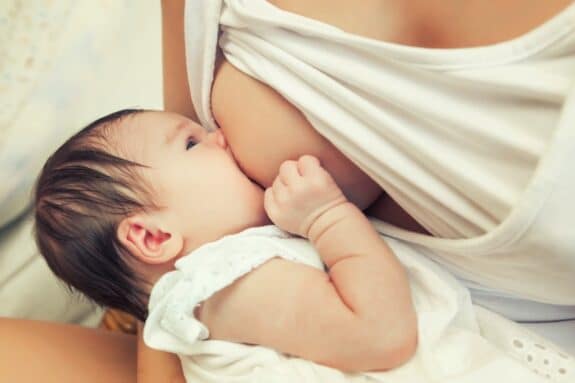Antibiotic resistance is a growing and pervasive issue in the world of health and pharmaceuticals. Scientists believe that breast milk could contain the solution. In fact, we already know that breastfed babies have more bacterial resistance than formula fed ones, but science has yet to determine which (if any) single component in breast milk’s complex and ever-changing blend of proteins, sugars, and fats may be responsible. After completing a pilot study on the effect that breast milk sugars have on Strep B bacteria, Vanderbilt University researchers believe they have finally found the answer.
“For most of the last century, biochemists have argued that proteins are most important and sugars are an afterthought. Most people have bought into that argument, even though there’s no data to support it,” Steven Townsend, Assistant Professor of Chemistry and director of the study, told Vanderbilt News. “Far less is known about the function of sugars and, as a trained glycoprotein chemist, I wanted to explore their role.”
To do that, Townsend and his team collected milk carbohydrates, or oligosaccharides, from different donor samples and then profiled them. They then added the sugar compounds to active Strep B cultures to see how they responded. Sugars from one sample in the pilot study managed to almost completely kill off the entire strep colony, and the remaining samples had moderate to light activity so the researchers continued their work.
Currently, they are testing two dozen more samples. Already, they have watched two samples kill the bacteria without breaking down the biofilm (a cluster that the bacteria forms to protect itself), four samples broke down the biofilms without killing the bacteria, and two killed the bacteria and broke down its biofilm. And the second phase of the study is not even yet complete.
“Our results show that these sugars have a one-two punch,” said Townsend. “First, they sensitize the target bacteria and then they kill them. Biologist sometimes call this ‘synthetic lethality’ and there is a major push to develop new antimicrobial drugs with this capability.”
The researchers also dosed some of the strep cultures with a mixture of antimicrobial peptides from human saliva and breast milk sugars, which showed that the sugars in breast milk may boost some of the antimicrobial properties of other agents (i.e. baby’s saliva, breast milk proteins, etc.). They have even determined that the sugars are effective on other types of infectious bacteria, including two of the six “ESKAPE” pathogens, which are the leading cause of infections inside of hospitals, worldwide.
Best of all, researchers say that breast milk’s antibiotic properties are non-toxic, which is very different from prescription antibiotics (and less likely to cause an allergic reaction). Also, since breast milk changes to accommodate baby’s needs, it is highly possible that any developments from this research will not carry the same risk of resistance as pharmaceutical antibiotics.







